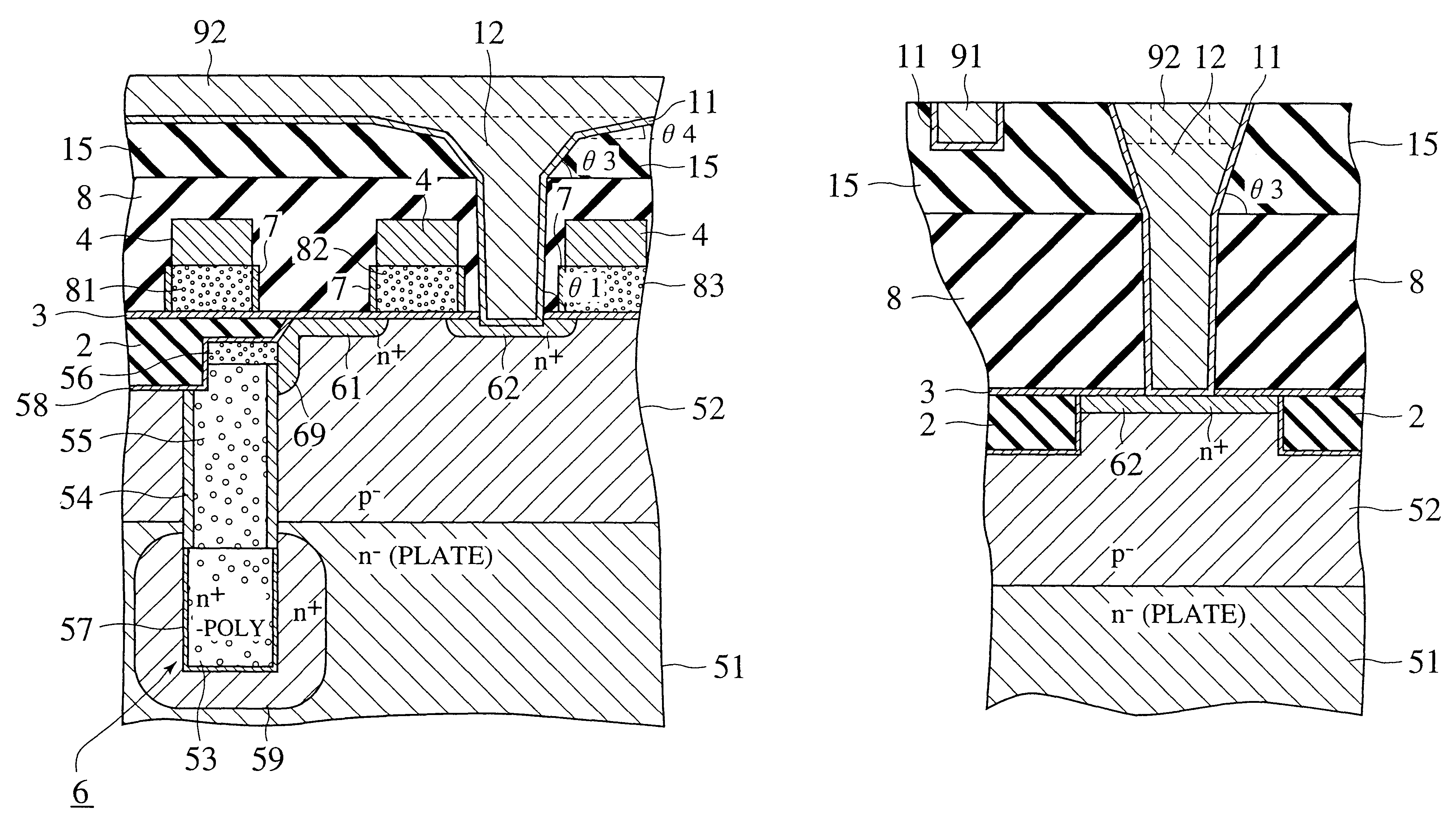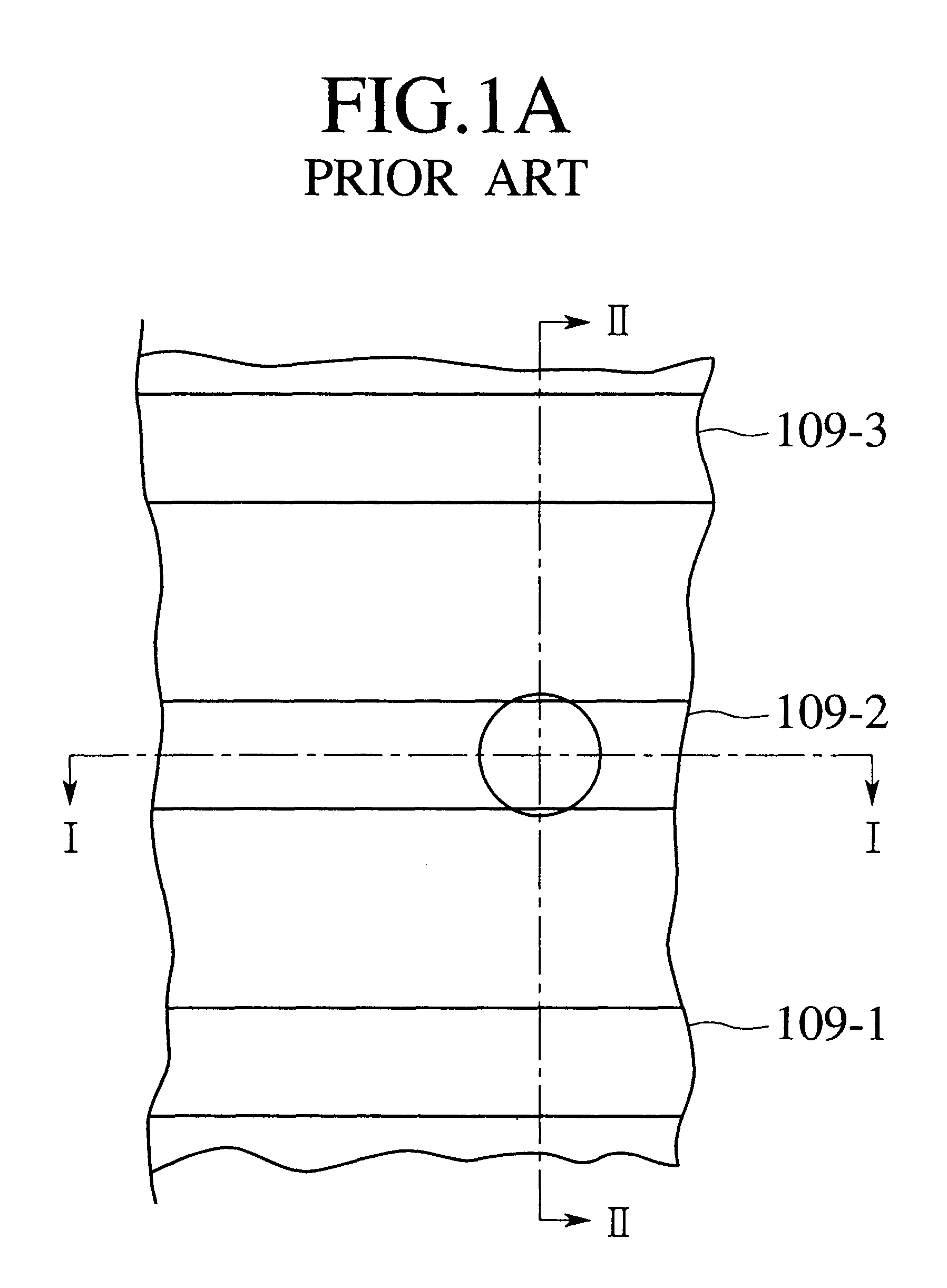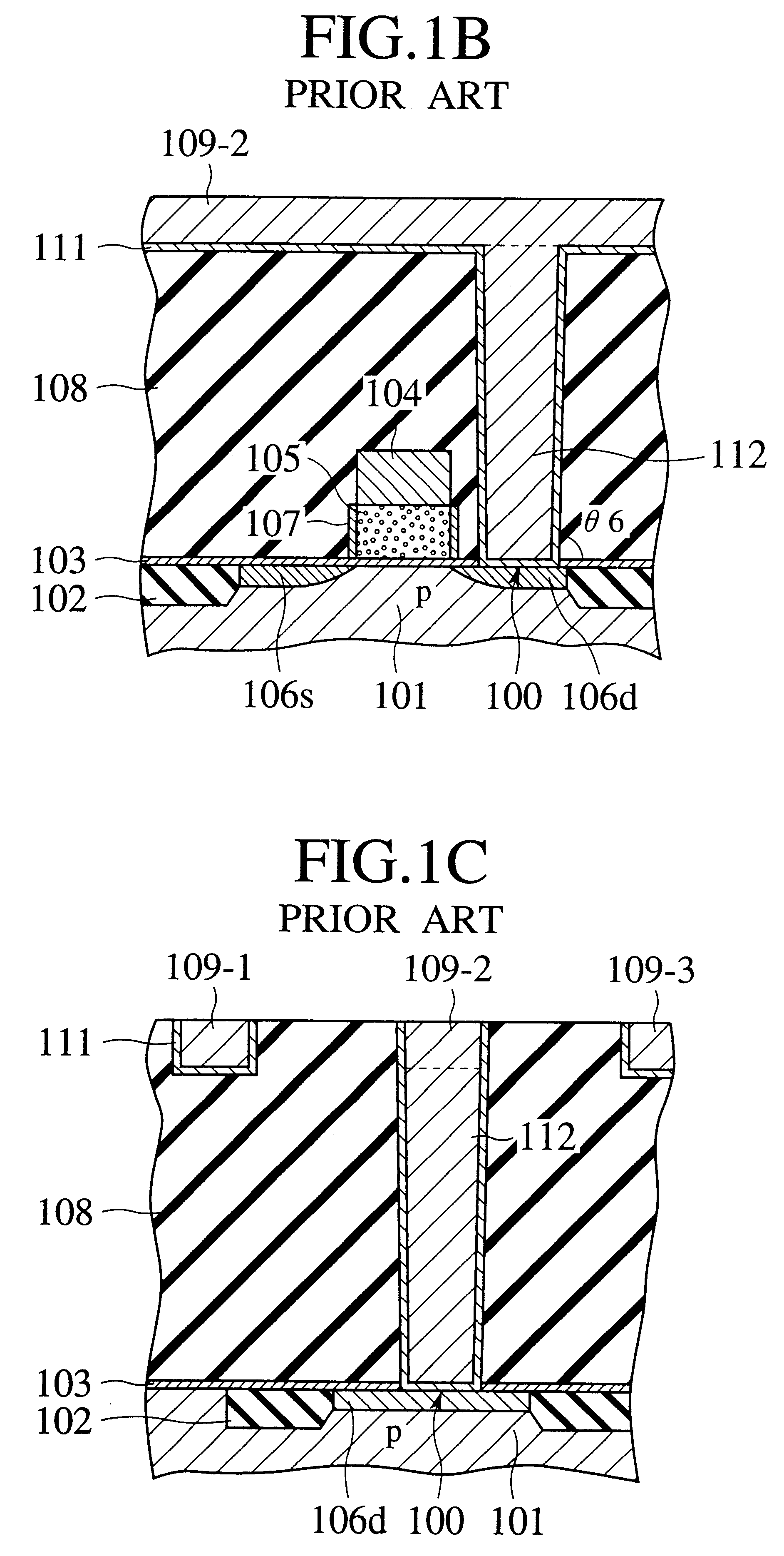Semiconductor device having high density interconnections and method for manufacturing the same
a technology of high density interconnection and semiconductor devices, which is applied in the direction of semiconductor devices, semiconductor/solid-state device details, electrical apparatus, etc., can solve the problems of short-circuiting with the neighboring bit line, and affecting the operation of the devi
- Summary
- Abstract
- Description
- Claims
- Application Information
AI Technical Summary
Problems solved by technology
Method used
Image
Examples
first embodiment
FIGS. 6A and 6B are top plan views of DRAM according to the present invention. FIG. 6B shows the shape of contact plugs 12 and active areas 66 (device regions) by eliminating the bit lines located on the upper level (top layer). FIG. 6C is a cross-sectional view along the I--I direction of FIG. 6A. FIG. 6D is a cross-sectional view along the II--II direction of FIG. 6A.
DRAM according to the first embodiment of the present invention is constructed by arranging a number of memory cells in the form of X-Y matrix. Each memory cell is made of an access transistor and a storage capacitor. FIGS. 6A and 6B are partial diagrams showing only several memory cells among them. FIG. 6C shows the neighborhood of two memory cells to be connected with word lines 82 and 83. The contact plug 12 arranged in the center of two memory cells is connected with a bit line 92 extending right and left. Access transistors comprising n.sup.+ source region 61 and n.sup.+ drain region 62 are arranged on both sides...
second embodiment
FIGS. 19A and 19B show top plan views of a DRAM according to a second embodiment of the present invention. In FIG. 19B, the top layer bit lines have been omitted in order to illustrate the shape of the contact plugs 12 and active areas 66. FIG. 19C is a cross-sectional view along the I--I direction of FIG. 19A; FIG. 19D, a cross-sectional view along the II--II direction of FIG. 19A
As FIG. 19C shows, the DRAM of the second embodiment of the present invention comprises an n.sup.- buried layer 51, which is used as a plate layer, provided on a p-type (100) silicon substrate (not shown in the diagram), and a DRAM unit cell access transistor which is provided on the surface of a p-well 52 above the plate layer. The p-well 52 is surrounded by an insulating film 2, comprising silicon oxide (SiO.sub.2) or the like, for isolating the elements, formed by a method such as STI method, the inner portion thereof forming an active area (in FIG. 19B, the extent of these active areas is indicated by ...
third embodiment
The above explanation described a case where the position of the contact hole and the position of the surface interconnections, such as the bit lines, are correctly aligned. In fact, however, there may be slight deviation from the correct positions within a permissible range. But, it should be clear from the following explanation of a third embodiment that the present invention is able to achieve its objectives even when such deviation exists.
FIG. 33A is a top plan view of a semiconductor device according to a third embodiment of the present invention. And, FIG. 33B is a cross-sectional view taken along I--I direction of FIG. 33A, and FIG. 33C, a cross-sectional view taken along II--II direction of FIG. 33A. As FIG. 33B shows, contact plug 12 juts out asymmetrically at a right angle to the surface interconnections (the II--II direction). As FIGS. 33B and 33C show, the semiconductor device according to the third embodiment of the present invention comprises a transistor on a p-type (...
PUM
 Login to View More
Login to View More Abstract
Description
Claims
Application Information
 Login to View More
Login to View More - R&D
- Intellectual Property
- Life Sciences
- Materials
- Tech Scout
- Unparalleled Data Quality
- Higher Quality Content
- 60% Fewer Hallucinations
Browse by: Latest US Patents, China's latest patents, Technical Efficacy Thesaurus, Application Domain, Technology Topic, Popular Technical Reports.
© 2025 PatSnap. All rights reserved.Legal|Privacy policy|Modern Slavery Act Transparency Statement|Sitemap|About US| Contact US: help@patsnap.com



